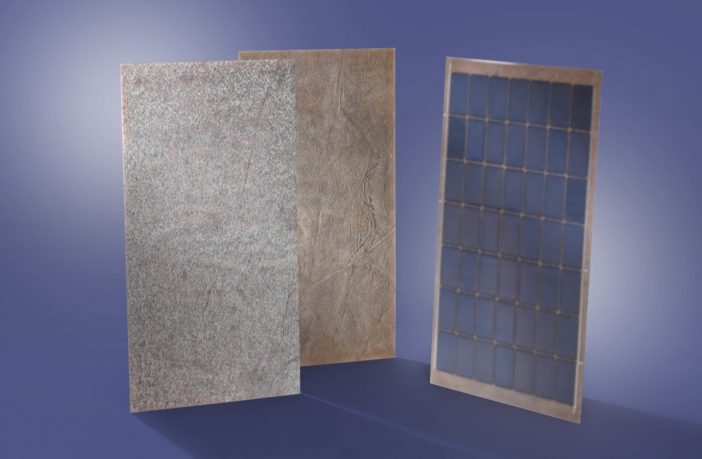- Researchers at Germany’s Institute for Solar Energy Research Hamelin (ISFH) have developed two different techniques to integrate stone veneers in conventional solar modules to make them suitable for building-integrated photovoltaics (BIPV) projects in stone facades.
“With our approach, the authentic rough stone surface allows for seamless integration of PV modules, even for an observer standing at close range from the facade or touching it. It is possible to use original equipment manufacturer (OEM) standard modules and to apply the front stone on them for costs comparable to glass printing,” ISFH scientist, Arnaud Morlier, told pv magazine. “The panels could be ready for mass production in a short term, as the stone veneers are commercially available,” he added. “All types of crystalline silicon or thin-film modules are suitable for this.”
One technique consists of replacing the front glass pane of the panels with a stone veneer sheet, and the other involves lamination of the natural stones veneer directly onto the front glass pane. The stone veneers used are 1.5 mm thin resin-based products reinforced with glass fibers and a stone layer up to 0.5 mm thick.
The German group was able to fabricate four large-area modules with a size of 1,220×610 mm and a weight of 13 kg each. All panels are based on bifacial heterojunction solar cells with a size of 156×156 mm encapsulated between two sheets of polyolefin encapsulation film.
After showing photovoltaic efficiencies of up to 11.2% with single-cell laminates, larger test modules have been fabricated. Some modules were fabricated by adding the stone veneer in a single lamination step and the others were first laminated like conventional glass-backsheet products and then laminated a second time for the addition of the veneers, thus showing that the stone veneers can be added on an already manufactured module, or be integrated during module production.
The stone veneers used and especially the resin layer absorb light in the UV and visible wavelength range. This absorption can be reduced by employing optimized resins. The natural patterns in the veneers, however, are said to cause significant spatial variations in photocurrent, which may, in turn, cause hot spots during PV operations, the scientists warned. This issue, however, may be solved by checking the homogeneity of the veneer translucence before lamination. Another solution, they add, could be fabricating smaller panels that allow a proper adjustment of currents within a module string.
Because of these inhomogeneities, while single strings in the modules achieved maximum efficiency of about 10%, the modified modules achieved a maximum efficiency of around 8.5%. For comparison, the modules used for the experiment without modification showed an efficiency of 20.7%. This halved efficiency, according to the German group, is in line with those of other modules designed with other coloring techniques including printed images or monochromatic interference coatings, but has the advantage of offering what it calls a “natural feeling and natural surface texture.” Furthermore, the panels can also be used as partial shading walls or semi-transparent roof elements.
The two techniques are described in the paper Photovoltaic Modules with the Look and Feel of a Stone Façade for Building Integration, which was recently published in RRL Solar.
Author: Emiliano Bellini
This article was originally published in pv magazine and is republished with permission.















